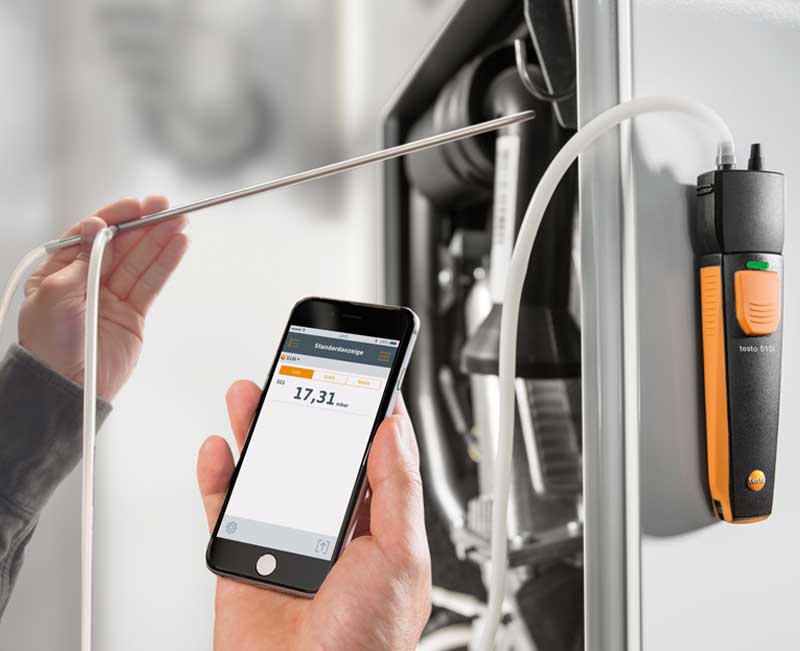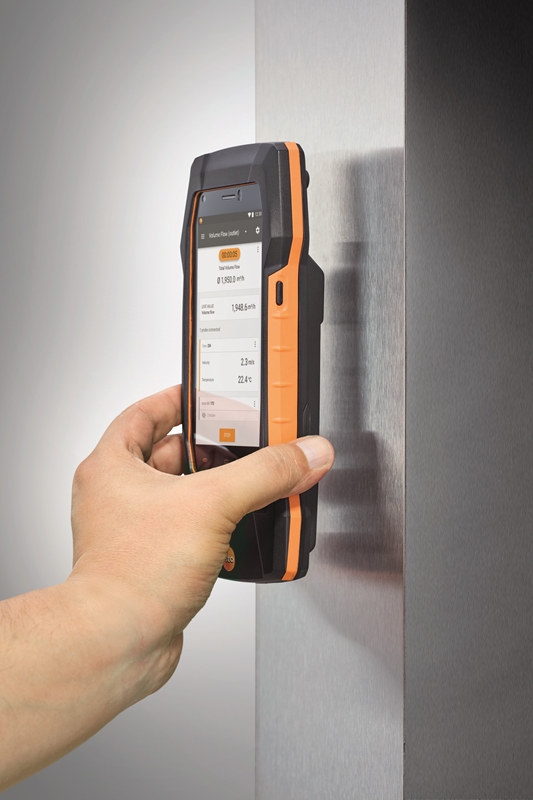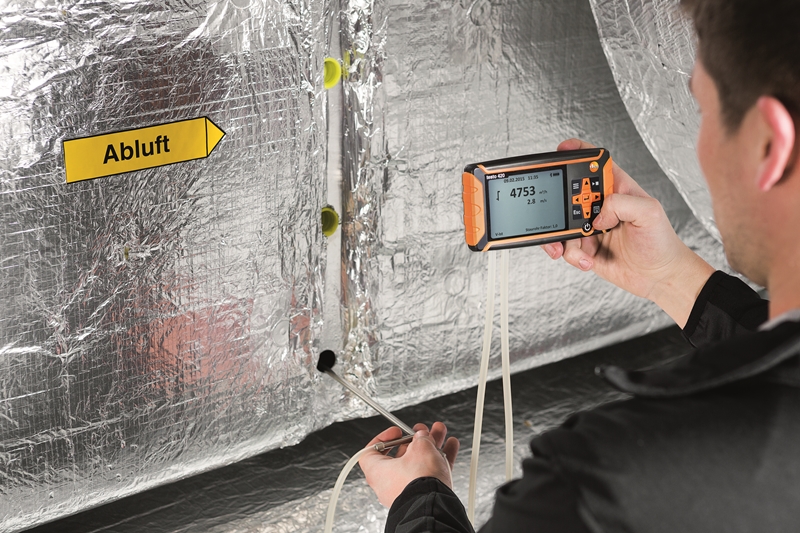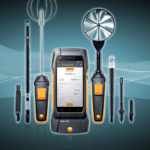Heating, Ventilation and Air Conditioning (HVAC) technicians need to account for a range of factors in ensuring higher indoor air quality (IAQ). These elements include:
- Air flow.
- Relative humidity.
- Particulate build up.
These factors can have a disproportionately far-reaching effect on IAQ and internal comfort. That’s why the best technicians appreciate the range of HVAC systems assessment instruments available from Testo Australia. One such solution is the differential pressure gauge – but how does this work and why is it important for all HVAC checks?
How do differential pressure gauges work?
Differential pressure gauges work on the principle of high and low pressure causing varying levels of air flow. Most HVAC systems, regardless of their end application, have pipe or duct air flow. Filters within these tubes cleanse air passing from outside to indoors. Once filtered, the pressure of the air on the downstream side of the filter will drop, which in turn will pull more air from the outside into the pipe.
By measuring the pressure at points on either side of a filter system, technicians can assess both particulate build up in the air and the condition of the air filter causing the change in pressure. This process requires a pre-determined threshold to show once differential pressure has dropped too low. Technicians set this threshold by calculating the volume flow rate and identifying the filter’s physical characteristics, such as thickness.

Conducting a system check and measurement with differential pressure gauge.
How does pressure switch data help to improve HVAC system checks?
The most important use for differential pressure gauges is checking on the performance of a HVAC system. A significant change in pressure measurements is the main indicator of a blocked air filter. If left unserviced, this will eventually reduce how effectively the ventilation, heating or cooling equipment works. Long term it can even cause the system to break down.
Differential pressure readings can also indicate a more serious issue within a tube or pipe. If an air filter has been significantly damaged, for example, the above effects will happen at a much faster rate, leading to costly equipment repairs or replacement even sooner. Data outside of a normal range could also indicate a problem with air flow before gases even reach a filter. With this insight, HVAC technicians can make more informed decisions about system maintenance and repairs.
But technicians can use the pressure measurements produced by digital gauges for more than just ventilation system maintenance. HVAC specialists can also use this data to inform wider IAQ planning.
Consider these scenarios:
- A blocked air filter inside a ventilation system can cause pollutants to leak through the blockage and contribute to increased particulate build up in your indoor space.
- Similarly, restricted ventilation air flow can cause indoor air pressure – a restricted air stream sucks more air in from other areas to fill the vacuum.
- In a worst-case scenario, this unbalanced differential air pressure will contribute to the HVAC system breaking down. This will of course have a knock-on effect on IAQ.
Differential pressure checks are an essential part of general HVAC equipment servicing and wider IAQ assessment. With that in mind, what instruments will help make these checks easier?
 Differential pressure readings say a lot about the function of your ventilation system.
Differential pressure readings say a lot about the function of your ventilation system.
Testo’s digital pressure gauge
Testo Australia are proud to develop a variety of differential pressure switch and pressure loss solutions. From flow measurements in water heaters to filters in air conditioners, we have an instrument to help technicians across a range of HVAC sector businesses.
The testo 510 digital gauge set
Testo’s full 510 differential pressure set allows users to perform measurements on a wide range of HVAC systems, from heaters to coolers to buildings’ integrated ventilation system. The testo 510 set is compactly designed for easy transport and comes equipped with rear-mounted magnets to make hands-free measurement seamless.
Testo’s 400 universal IAQ instrument
This solution is the ultimate asset for any HVAC technician as it can log and collate data on a huge number of factors relative to IAQ and internal comfort. The end-game for all HVAC checks is to ensure that the system, whatever its function, is contributing to a more comfortable indoor environment. The testo 400 instrument makes this process easier, allowing users to perform multiple data measurements with the same instrument.
 The testo 400 is the ultimate IAQ parameter measurement solution
The testo 400 is the ultimate IAQ parameter measurement solution
The testo 420 differential pressure instrument
Testo’s 420 solution is ideal for performing differential pressure loss filter checks. Users calculate flow velocity and volume flow using the internal Pitot tube, and all measurements are stored in the instrument for future data analysis and documentation. The large screen display and user-friendly menu guidance make the testo 420 ideal for time-poor technicians.
 Testo’s 420 instrument is ideal for differential pressure measurements in various applications.
Testo’s 420 instrument is ideal for differential pressure measurements in various applications.
No technician can fulfill all of the expectations of high-quality HVAC system measurements and checks without a pressure gauge. For more information about Testo’s own advanced line of HVAC system differential pressure gauges, contact the sales team for a quote.









 Reduce cooking oil costs while ensuring quality
Reduce cooking oil costs while ensuring quality Expert knowledge on CO2 monitoring
Expert knowledge on CO2 monitoring Refrigeration knowledge - in 3 modules
Refrigeration knowledge - in 3 modules



